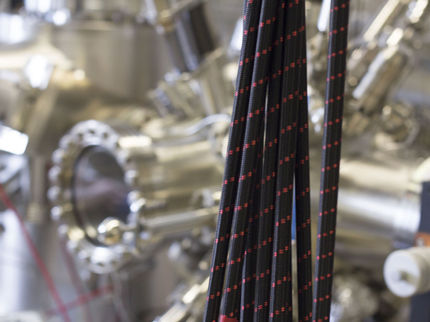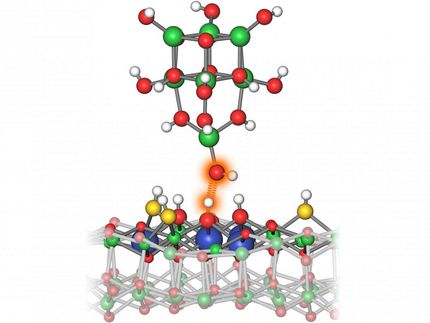Researcher uses vibrations to identify materials' composition
Hybrid photonic-nanomechanical force microscopy (HPFM) brings greater spatial resolution
A researcher at the University of Central Florida has developed a new method for identifying materials' unique chemical "fingerprints" and mapping their chemical properties at a much higher spatial resolution than ever before.
It's a discovery that could have promising implications for fields as varied as biofuel production, solar energy, opto-electronic devices, pharmaceuticals and medical research.
"What we're interested in is the tools that allow us to understand the world at a very small scale," said UCF professor Laurene Tetard, formerly of the Oak Ridge National Laboratory. "Not just the shape of the object, but its mechanical properties, its composition and how it evolves in time."
For more than two decades, scientists have used atomic force microscopy to determine the surface characteristics of samples at the microscopic scale. A "needle" that comes to an atoms-thin point traces a path over a sample, mapping the surface features at a sub-cellular level.
But that technology has its limits. It can determine the topographical characteristics of sample, but it can't identify its composition. And with the standard tools currently used for chemical mapping, anything smaller than roughly half a micron is going to look like a blurry blob, so researchers are out of luck if they want to study what's happening at the molecular level.
A team led by Tetard has come up with a hybrid form of that technology that produces a much clearer chemical image. Hybrid Photonic-Nanomechanical Force Microscopy (HPFM) can discern a sample's topographic characteristics together with the chemical properties at a much finer scale.
The HPFM method is able to identify materials based on differences in the vibration produced when they're subjected to different wavelengths of light.
"What we are developing is a completely new way of making that detection possible," said Tetard, who has joint appointments to UCF's Physics Department, Material Science and Engineering Department and the NanoScience Technology Center.
The researchers proved the effectiveness of HPFM while examining samples from an eastern cottonwood tree, a potential source of biofuel. By examining the plant samples at the nanoscale, the researchers for the first time were able to determine the molecular traits of both untreated and chemically processed cottonwood inside the plant cell walls.
Original publication
Original publication
L. Tetard, A. Passian, R. H. Farahi, T. Thundat & B. H. Davison, "Opto-nanomechanical spectroscopic material characterization", Nature Nanotechnology, 2015
Topics
Organizations
Other news from the department science

Get the analytics and lab tech industry in your inbox
From now on, don't miss a thing: Our newsletter for analytics and lab technology brings you up to date every Tuesday. The latest industry news, product highlights and innovations - compact and easy to understand in your inbox. Researched by us so you don't have to.























































